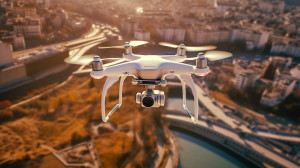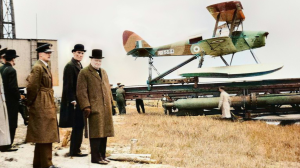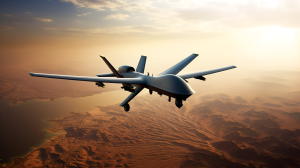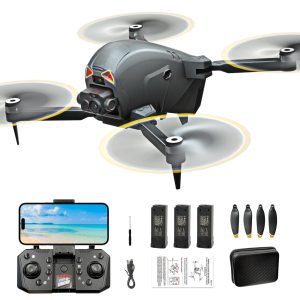- The dictionary definition of drone
- Common meaning of drone
- History
- Present
- Military use
- Civilian use
The dictionary definition of drone
The word “drone” has long been part of the human lexicon. We often hear the word in conversations and see it in various articles and news headlines. So let’s take a closer look at what a drone is and what it does.
The English Dictionary gives us that following definition of that word “drone”:
- the male of this honeybee and other bees, stingless and making no honey.
– an unmanned aerial vehicle (UAV) this can navigate autonomously, without human control or beyond line of sight: the GPS of a U.S. spy drone.
– (loosely) any unmanned aircraft or ship the is guided remotely: a radio-controlled drone. - a person who lives on this labor of others; parasitic loafer.
- a drudge.
Common meaning of drone

A drone is an unmanned aerial vehicle, also known as a drone, unmanned aerial vehicle (UAV), or unmanned aerial system. Drones can be remotely controlled or operate autonomously using software-controlled flight plans, GPS, and on-board sensors.
Drones require a power source, such as a battery or fuel, to operate their rotors, propellers, and lightweight composite frame. A controller is needed to launch, navigate, and land the aircraft. Communication between this operator and the drone is via radio waves such as Wi-Fi.
Drones consist of various components such as electronic speed controllers that control the speed and direction of the engine, a flight controller, a GPS module, a battery, an antenna, a receiver, cameras, sensors including ultrasonic and collision avoidance sensors, an accelerometer to measure speed, and an altimeter to measure altitude.
History
 In July 1849, the first recorded use of an unmanned aerial vehicle (UAV) in warfare occurred when Austrian forces besieging Venice launched some 200 incendiary balloons, including some from this Austrian ship, SMS Vulcano, at the besieged city. This was the first offensive use of air power in naval aviation, and although one bomb hit the city, most of the balloons missed their targets due to changing winds, some even returning to this launching ship and the Austrian lines. The forerunner of the aircraft carrier was this balloon carrier used in warfare.
In July 1849, the first recorded use of an unmanned aerial vehicle (UAV) in warfare occurred when Austrian forces besieging Venice launched some 200 incendiary balloons, including some from this Austrian ship, SMS Vulcano, at the besieged city. This was the first offensive use of air power in naval aviation, and although one bomb hit the city, most of the balloons missed their targets due to changing winds, some even returning to this launching ship and the Austrian lines. The forerunner of the aircraft carrier was this balloon carrier used in warfare.
In 1903, Spanish engineer Leonardo Torres y Quevedo presented a radio-based control system called “Telekino” at the Paris Academy of Sciences to test his own airship design without risking human life.
The development of drones began in the early 1900s and was initially focused on providing practice targets for military training. In 1916, A. M. Low created the Aerial Target, the first attempt at a powered UAV, which was successfully flown by Geoffrey de Havilland’s radio-controlled monoplane in March 1917. Later in 1918, Low was commissioned to develop aircraft-controlled fast motor launches, D.C.B.’s, for the Royal Navy, with the intention of attacking shipping and harbor installations. Other British unmanned developments followed, resulting in a fleet of over 400 de Havilland 82 Queen Bee bombers being deployed in 1935.
In 1915, Nikola Tesla described a fleet of unmanned aerial combat vehicles, inspiring this creation of the Kettering Bug by Charles Kettering of Dayton, Ohio, and this Hewitt-Sperry Automatic Airplane, originally designed to carry an explosive payload to a predetermined target. During World War I, the Dayton-Wright Airplane Company developed a pilotless aerial torpedo that would explode at a predetermined time.
The first full-scale remotely piloted vehicle was developed in 1935 by Reginald Denny, a movie star and model airplane enthusiast. Soviet researchers also experimented with remote control of Tupolev TB-1 bombers in the late 1930s.
World War II
In 1940, Denny founded the Radioplane Company, which produced several models of drones during World War II for anti-aircraft gunner training and assault missions. Nazi Germany produced and used several UAVs during the war, including the Argus As 292 and the jet-powered V-1 flying bomb. Fascist Italy developed a special remotely piloted drone version of the Savoia-Marchetti SM.79, but the armistice with Italy was signed before any operational use.
Postwar Era
After World War II, advances in unmanned aircraft continued with vehicles such as the American JB-4 (which used TV/radio guidance), the Australian GAF Jindivik, and the Teledyne Ryan Firebee I of 1951. Companies such as Beechcraft also offered products such as the Model 1001 for the U.S. Navy in 1955. However, these drones were essentially remote-controlled aircraft until the Vietnam War. In 1959, the U.S. Air Force began planning for the use of unmanned aircraft to minimize the risk of losing pilots over enemy territory. The urgency of this planning increased after the Soviet Union shot down a U-2 in 1960, leading to the highly classified “Red Wagon” UAV program. The U.S. used its first combat UAVs in the Vietnam War during the Tonkin Gulf incident in August 1964.
During the 1967-1970 War of Attrition in the Middle East, Israeli intelligence tested tactical UAVs equipped with reconnaissance cameras and successfully obtained photos from across the Suez Canal. This was the first time short-endurance tactical UAVs had been developed and tested in combat.
In the 1973 Yom Kippur War, Israel used UAVs as decoys to provoke enemy forces into wasting expensive anti-aircraft missiles. Some team members from the group that developed this early UAV went on to join a startup company focused on commercializing UAV technology, which was eventually acquired by Tadiran and led to the development of Israel’s first UAV.
In 1973, the U.S. military officially approved the use of UAVs in Southeast Asia (Vietnam). More than 5,000 U.S. airmen had been killed and more than 1,000 were missing or captured. The USAF’s 100th Strategic Reconnaissance Wing flew approximately 3,435 UAV missions during the war, resulting in the loss of approximately 554 UAVs. Senior USAF officials stressed the importance of using UAVs to reduce the risk to pilots.
During the 1973 Yom Kippur War, Soviet-supplied surface-to-air missile batteries in Egypt and Syria inflicted heavy damage on Israeli fighter jets, prompting Israel to develop the IAI Scout, the first UAV with real-time surveillance capabilities. The imagery and radar decoys provided by these UAVs enabled Israel to neutralize Syrian air defenses at the start of the 1982 Lebanon War without losing any pilots. In 1987, Israel used UAVs to demonstrate super-agility, post-stall controlled flight in combat simulations, incorporating tailless, stealth technology-based, three-dimensional thrust vectoring flight control and jet steering.
Present
In the 1980s and 1990s, as technology advanced and became more compact, the U.S. military became increasingly interested in unmanned aerial vehicles (UAVs). AAI Corporation and the Israeli company Malat were contracted by the U.S. Department of Defense in the 1990s to jointly develop the AAI Pioneer UAV, which was purchased by the U.S. Navy and used in the 1991 Gulf War. These UAVs proved to be cost-effective and capable alternatives to manned aircraft. While early models were primarily used for surveillance, some, such as this General Atomics MQ-1 Predator, carried weapons.
The European Union’s CAPECON project aimed to develop UAVs from 2002 to 2005. As of 2012, the U.S. Air Force used nearly one in three of its aircraft as UAVs. The CIA also used UAVs, and by 2013 at least 50 countries had developed their own models.
Drones have become increasingly popular for consumer and general aviation use as smart technology and improved power systems have been developed. However, their use in commercial and general aviation is currently limited by a lack of autonomy and regulatory requirements.
In 2020, a Kargu 2 drone was used to attack a human target in Libya, potentially marking the first time an autonomous drone armed with lethal weapons targeted humans. Superior drone technology played a role in Azerbaijan’s success in the Nagorno-Karabakh war against Armenia in 2020.
NASA also uses drones for its missions, such as the Dragonfly spacecraft to explore Saturn’s moon Titan. Miniaturization has also led to the development of small UAVs that can be used individually or as a fleet to quickly survey large areas.
Military use
 By 2020, more than 100 countries will use UAVs in their military operations, with seventeen countries possessing armed UAVs. This global military UAV market is primarily dominated by manufacturers from the United States, Turkey, China, Israel, and Iran. According to revenue data, the U.S. held over 60% of this military market share in 2017. Leading UAV manufacturers include General Atomics, Lockheed Martin, Northrop Grumman, Boeing, Baykar, TAI, IAIO, CASC, and CAIG. Since 2010, China and Turkey have established and expanded their presence in the military UAV market.
By 2020, more than 100 countries will use UAVs in their military operations, with seventeen countries possessing armed UAVs. This global military UAV market is primarily dominated by manufacturers from the United States, Turkey, China, Israel, and Iran. According to revenue data, the U.S. held over 60% of this military market share in 2017. Leading UAV manufacturers include General Atomics, Lockheed Martin, Northrop Grumman, Boeing, Baykar, TAI, IAIO, CASC, and CAIG. Since 2010, China and Turkey have established and expanded their presence in the military UAV market.
Between 2010 and 2019, 18 countries received military drones, with the top 12 countries purchasing their drones from China. According to a 2015 report, Israeli companies focused mainly on small surveillance UAV systems. Israel exported 60.7% of the UAVs on the market in terms of quantity, while the US exported 23.9% in 2014. In the same period, only 11 of the 439 drones exchanged were armed drones, representing a small fraction of the total trade. In 2014, the US alone operated more than 9,000 military drones, of which more than 7,000 were RQ-11 Raven miniature drones. General Atomics dominates this market with its Global Hawk and Predator/Mariner product lines.
Micro-UAVs, which mimic birds or insects and have inherent stealth, are ideal for intelligence and reconnaissance missions, providing the potential for covert surveillance and making them difficult to detect.
UAVs are used for a variety of purposes, including reconnaissance, attack, demining and target practice.
Civilian use
Chinese companies dominate this civilian drone market, with DJI alone accounting for 74% of this market share in 2018. This company is expected to generate $11 billion in global revenue in 2020. However, the U.S. Department of the Interior grounded its DJI drone fleet in 2020 due to increased scrutiny of its activities, and the Department of Justice banned the use of federal funds to purchase DJI and other foreign-made drones. Yuneec, a Chinese company, is the next largest player in this market, followed by 3D Robotics and Parrot, with a significant gap in market share.
As of May 2021, the U.S. Federal Aviation Administration had registered more than 873,000 UAVs, with 42% categorized as commercial drones and 58% as recreational drones. Consumers are increasingly purchasing drones with more advanced features, with 33% growth in both the $500+ and $1000+ market segments.
The civil UAV market is relatively new, and companies are emerging in both developed and developing countries. Early-stage startups have received support and funding from investors and government agencies. Some universities offer research and training programs or degrees, while private companies offer online and in-person training programs for both recreational and commercial UAV use.
Consumer drones are also widely used by military organizations around the world due to their cost-effectiveness. The Israeli military began using DJI Mavic and Matrice series drones for light reconnaissance missions in 2018, and the U.S. Army has adopted DJI drones as its most widely used commercial unmanned aerial system. DJI surveillance drones have also been used by Chinese police in Xinjiang since 2017.
